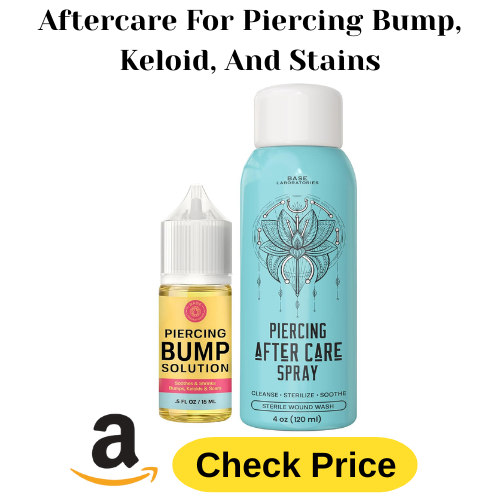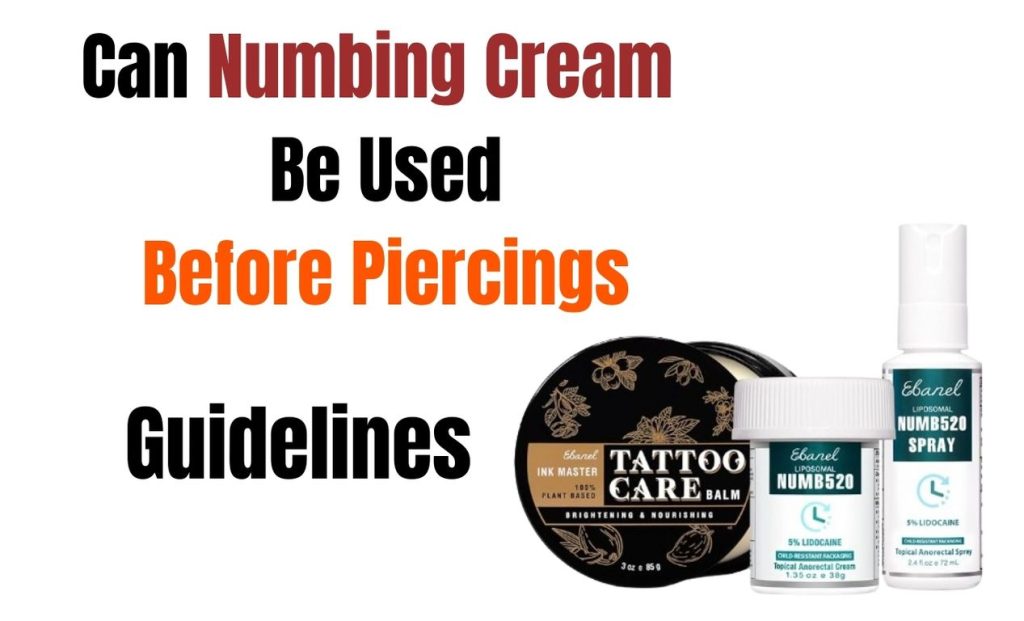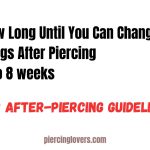“Numbing Cream” a product that is mostly used in tattoo for removing pain and discomfort. But do you know as well as reducing pain in tattoo, you can also use numbing cream before your piercing to reduce piercing pain and discomfort.
So many of you who asked that can I use tattoo numbing cream for piercing, for them the answer is yes. Numbing cream can be used before getting a piercing, and it can significantly reduce the pain and discomfort associated with the procedure. However, before deciding to use it, there are several important factors to consider to ensure it’s the right choice for you.
Today in this article, we will tell you can numbing cream be used before piercings or not with guidelines. So without wasting time, lets dive in the article.
Should You Use Numbing Cream Before a Piercing
Using tattoo numbing cream for a piercing can be particularly beneficial if you are worried about pain or have a low pain threshold. It’s also helpful for individuals who are getting their first piercing and might be anxious about the process. However, here are some key points to consider:
- Consult the Piercer: Before using numbing cream, it’s crucial to consult with your piercer. Some piercers may have specific preferences or concerns about using numbing creams. For instance, certain creams can make the skin feel thicker or slippery, which might make it slightly harder for the piercer to perform the procedure accurately. Additionally, some piercers believe that experiencing the full sensation of the piercing is an important part of the process.
- Patch Test: It’s important to perform a patch test before applying numbing cream to a larger area. This involves applying a small amount of the cream to a small area of your skin, usually on your forearm, to check for any adverse reactions such as itching, redness, or swelling. Allergic reactions to the ingredients in numbing cream can occur, and it’s better to be safe than sorry.
- Follow Instructions Carefully: Each numbing cream comes with specific instructions regarding how much to apply, how long to leave it on, and when to remove it before the piercing. It’s essential to follow these instructions precisely to avoid potential side effects such as skin irritation, prolonged numbness, or, in rare cases, systemic toxicity, where too much of the active ingredient is absorbed into the bloodstream.
- Effectiveness: While numbing cream can significantly reduce pain, it’s not always 100% effective. The level of numbing can vary depending on the area of the body, skin thickness, and individual sensitivity. Areas with thinner skin, like the earlobes, may become quite numb, whereas thicker or more sensitive areas, such as cartilage or the nose, might still experience some discomfort.
Things to Consider Before Applying Tattoo Numbing Cream On Piercing
Although numbing cream can make the piercing process more comfortable, it’s important to remember that the discomfort from most piercings is usually brief. Many people find that the pain is quick and manageable without the use of numbing agents. Additionally, the use of numbing cream might delay the healing process for some individuals, as it can sometimes interfere with the body’s natural healing mechanisms.
Another consideration is that numbing cream may not be necessary for all types of piercings. For example, ear lobe piercings are often described as a quick pinch that’s over almost as soon as it starts, while more complex piercings, such as those in cartilage or more sensitive areas, might warrant the use of numbing cream for added comfort.
Frequently Asked Questions
Q: Can numbing cream completely eliminate the pain of getting a piercing?
A: Numbing cream can significantly reduce the pain of a piercing, but it might not completely eliminate it. The effectiveness can vary depending on the area of the body, the thickness of the skin, and individual pain tolerance.
Q: How long before a piercing should I apply numbing cream?
A: Numbing cream should generally be applied 20 to 60 minutes before the piercing, depending on the product’s instructions. This allows enough time for the cream to take full effect.
Q: Is it safe to use numbing cream for all types of piercings?
A: Numbing cream is generally safe for most piercings, but it’s important to consult with your piercer first. Some piercers may have concerns about using it, especially for piercings in more sensitive or delicate areas.
Q: Are there any side effects of using numbing cream before a piercing?
A: Possible side effects of numbing cream include skin irritation, redness, swelling, or an allergic reaction. In rare cases, improper use can lead to more serious issues, such as systemic toxicity if too much is absorbed into the bloodstream.
Q: Do all piercers recommend using numbing cream?
A: Not all piercers recommend using numbing cream. Some prefer their clients to experience the full sensation of the piercing, as numbing cream can sometimes make the skin more difficult to pierce accurately.
Q: Can I apply numbing cream myself before going to the piercing studio?
A: Yes, you can apply numbing cream yourself, but make sure to follow the instructions carefully and discuss it with your piercer beforehand. It’s also important to perform a patch test to ensure you don’t have an allergic reaction.
Q: Will using numbing cream affect the healing process of my piercing?
A: Numbing cream usually doesn’t interfere with the healing process if used correctly. However, overuse or improper application can potentially cause irritation, which might slow down healing.
Q: Can I use numbing cream for multiple piercings at once?
A: It’s possible to use numbing cream for multiple piercings, but be cautious about the total area covered. Large amounts of numbing cream can increase the risk of side effects. Always consult with your piercer and follow the product’s guidelines.
Final Words
Numbing cream can be a helpful option for those who are nervous about the pain associated with getting a piercing. It can make the experience more comfortable, particularly for individuals with low pain tolerance or anxiety about the procedure. However, it’s essential to consult with your piercer, perform a patch test, and follow the instructions carefully to ensure the cream is used safely and effectively. Remember, while numbing cream can reduce pain, it might not completely eliminate it, especially in more sensitive areas. Ultimately, whether to use numbing cream is a personal choice, but with the right precautions, it can help make the piercing process less daunting.




